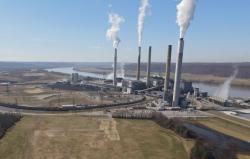
OR WAIT null SECS
© 2024 MJH Life Sciences™ and Turbomachinery Magazine. All rights reserved.
Aftermarket parts: Is there life after OEM?
As the gas turbine morphs from a supplementary source of power to being increasingly responsible for baseload, the aftermarket has become more lucrative. Carlo Luzzatto, President of Chromalloy, estimated that the gas turbine (GT) service business amounts to somewhere around $16 to $17 billion per year. He qualified this by saying that this number may not include upgrades to turbines and replacements of the fleet, so the actual total may be as high as $20 billion annually.
With so much at stake, it is not surprising that more spare part and aftermarket options are becoming available. This applies, in particular, to the F-class market. “As the installed base matures and existing OEM service contracts expire, the F-class market has begun to open up for the independent sector,” said Mick Conway, Marketing Director of Wood Group GTS.
As well as straightforward replacement parts, some suppliers are seeking to improve upon the original components by incorporating design and material innovation. However, third parties typically are reluctant to offer parts for the very latest machines. “For an engine design less than 10 years in operation, we recommend the operator uses OEM parts, as design integrity, repair history and failure modes are being established and ideally addressed,” said Scott Nicol, General Manager for Turbine Services at Chromalloy.
Spare parts comprise the largest slice of the maintenance pie. As a result, there are plenty of choices available for the Frame 5 up through the E, and more recently for Fclass engines, which have been spinning for over 15 years. Their designs have stabilized to a point where third parties provide options aimed at improving life cycle costs. This makes F-class components a hot commodity.



